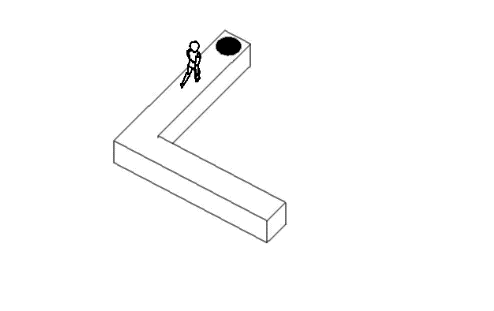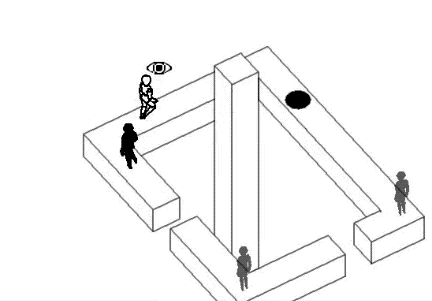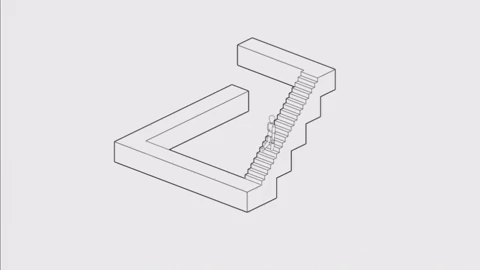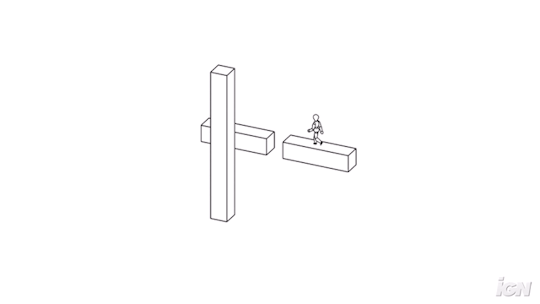#echochrome
Explore tagged Tumblr posts
Text
youtube
THE PILE PRESENTS: X-Play - Here Comes the Boom (Blox) | 5/6/08
Bonus points if you're watching this on Google (echo)Chrome, assuming you haven't switch to literally any other browser already.
(4GTV - 24/7. LIVE. WATCH NOW.)
#The Pile#G4#X-Play#Prototype#LittleBigPlanet#Killzone 2#Rock Band#McDonald's#South Park#Wii Fit#NCAA Football 09#Madden NFL 09#Gran Turismo 5#SEGA Superstars Tennis#Mario Kart Wii#The Sims 2#Boom Blox#Grand Theft Auto IV#Halo 3#Zero Punctuation#Echochrome#G-Spot#Filter#The King of Kong: A Fistful of Quarters
2 notes
·
View notes
Text
Echochrome II - prime #4507
Artist: Hideki Sakamoto
youtube
#music#vgm#video game music#Hideki Sakamoto#Echochrome II#echochrome#playstation 3#ps3#Japan Studio#Sony Computer Entertainment#Youtube
1 note
·
View note
Text
if me being one of the last echochrome fans on earth is my fate then so be it.
um,mm the game is kind of boring if i remember right but the music is SO GOOD if you have a lot of patience you should like. play it or something.
1 note
·
View note
Text
Concrete Genie Review: A Magical Stroke of Genius
Concrete Genie Review: A Magical Stroke of Genius! @Pixelopus puts a fresh coat of paint on gaming. Now can I get one of those cool care packages you've been handing out to Sony WWS?
Concrete Genie is one of those rare titles that takes me back to the PS3 days. PlayStation published games like Tokyo Jungle, Echochrome, Flower, and Puppeteer during the PS3 era, and those games were some of the most underrated gems I played last generation. Concrete Genie is like those games with its quirky characteristics that felt fresh from the current games being released. Concrete Genie…
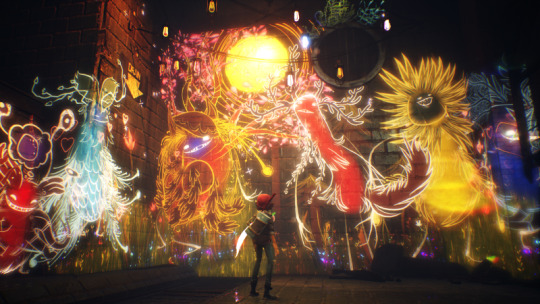
View On WordPress
7 notes
·
View notes
Text
Today I'm gonna play: Monument Valley
Monument Valley is pretty much regarded as one of the best mobile games out there, probably for revolutionizing how mobile games can look and feel as well as a game released for other platforms with a similar artstyle. Having always heard about the game but never trying it, I've changed that today.
The gameplay is very simple to the point that almost anyone can play it. You manipulate parts of the environment so that you can see it in a different perspective and travel your way to the ''end'' of a level (which is usually a kind of arch to enter). It's similar to Echochrome for the PSP, which is the only other game that I know that uses this mechanic. The length of each level is also short, which is perfect for when you're busy and on-the-go, but it's a bit too short for when you're free. But considering that most mobile games are aimed for a wide audience that rely on portability, the former may make more sense.
The visuals are definitely a high point. Combining a mix of minimalism with what looks to be Persian architecture for a number of levels (I could be wrong about this!) is a unique mix that's come out beautifully. Each level has a selection of palettes to fit the narrative point that the protagonist is in, often using soft hues and gradients. It's relaxing to look at. In addition to the visuals are the sounds too, minimal yet very outspoken in input feedback. Each movement you make creates a singing melody that guides you as you play. It's very useful in guiding the player through the level.
The story is also minimal and somewhat cryptic with its short dialogue, it mostly uses a show don't tell approach in its levels. Although a lot of it is left to interpretation, you can generally get a sense of what's going on through the visuals. It's an interesting take that's great for reaching wider audiences around the world.
Overall Monument Valley has created an effective way of respecting the player's imagination and skills by letting them create their ''own'' journey as they work their way through using perspective.
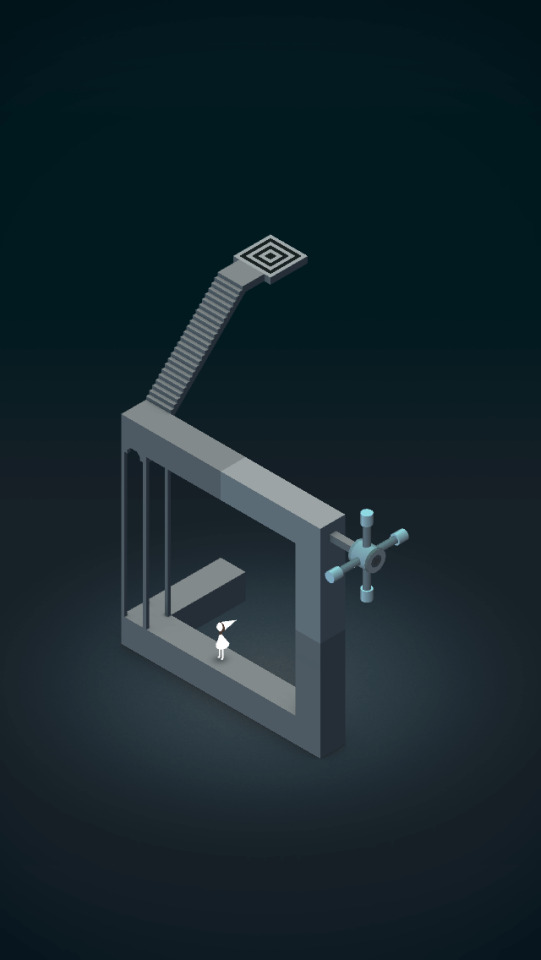


2 notes
·
View notes
Photo

Echochrome 🏢 Will 📅 2008 🖥 PS3, PS4, PS5, PSP #videogames
1 note
·
View note
Text
Game Concepts
a) Idea 1
One interesting quality of Hockney’s paintings is how he distorts perspective and captures multiple viewpoints all at once. I want this to be the core element of the gameplay.
I was inspired by games such as And Yet It Moves, Echochrome, and Monument valley which made use of orthographic viewpoints to play with the perspective.
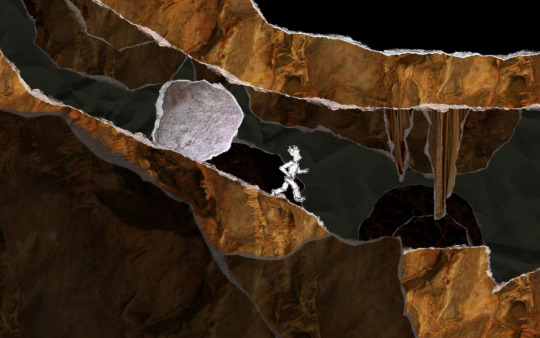
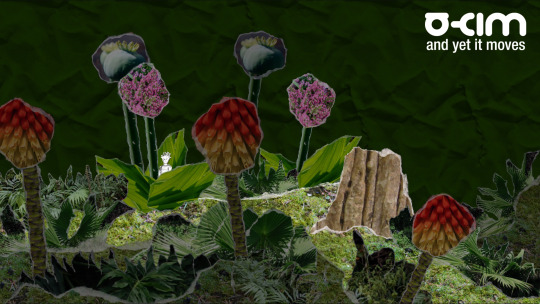



The game will be in a third person perspective. The level is comprised of three small contained rooms/sections.The player views the ‘rooms' from an outside perspective. They must rotate the environment at 90 degree angles on the spot in order to get from point A to point B. The perspectives of this environment will be very warped, and when the environment is rotated, background elements and foreground elements blend together to create pathways that did not exist before.
b) Idea 2
The game will be in a first person perspective. This level is comprised of three contained rooms. This time the player must walk around a bigger environment that mimics David Hockney’s art style. The player will be walking around each of the areas and looking at it from different vantage points until the paintings reveal themselves (perspective anamorphosis). Once the right perspective is found, they are granted a puzzle piece and a means of moving on to the next section. Each of these puzzle pieces come together to create a completed painting (one of Hockney’s paintings).
Alternatively, once the right angle is found, they would be able to walk through the completed painting in order to find and collect the puzzle piece. There could be a door placed somewhere in the completed painting to move on to the next section.
c) idea 3 - Photography game
An artist’s process is just as important as the art. A process Hockney uses to create these interesting perspectives in his art is his collages of polaroids. Hockney basically takes individual pictures of different parts of an environment and arranges them to create something that compresses all of these vantage points into one image. I want to have the player participate in the process of creating one of Hockney’s paintings by taking pictures of the environment around them.
The setting will be one big open world that, once again, emulates the style of a Hockney painting. There is also a big empty board with uncoloured outlines of each of the puzzle pieces and how they are supposed to fit together. The player must walk though the environment and find the right vantage points that recreate each puzzle piece and take a picture. Each time the correct picture is taken, the player is granted said picture in the form of a puzzle piece. They must then find the right place for the piece on the board. Collect all of the puzzle pieces this way to create one of Hockney’s collages.
Taking pictures of the flower vases give you special items/rewards. this encourages the players to explore and experiment without just trying to complete tasks. I wanted to make the flower vases significant because of Hockney's experience with a wartime art piece that was just a still life of some flowers in a vase. He talks about how it played a role in processing his grief, as well as how that grief translated into his art. I think his ethos of trying to capture beauty in the world would be perfectly emphasised here.
There are also some interact-able elements in the environment. you can move some furniture and items around, you can pick up certain objects, and you can even paint on some of the papers in the environments. Players will have incentive to interact with the environment as it grants them certain things (if there's a time limit you could be granted more time).
One particular intractable element would be his piece, '20 Flowers and Some Bigger Pictures.' Each of the squares would be movable. It would essentially be a square tile puzzle that the players can move around to complete the image.
Another interact-able element could be to simply paint a bicycle.
there could be a timer to make it more difficult but that might also clash with the philosophy of my artist.
0 notes
Text
Fez
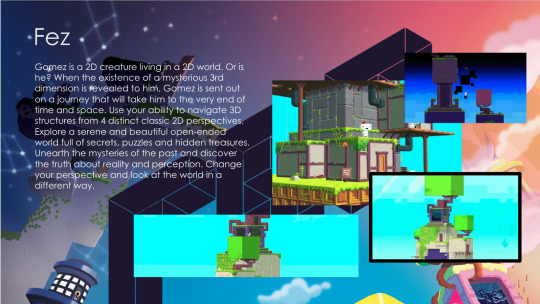
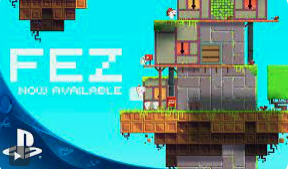
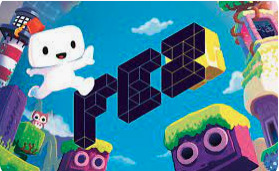
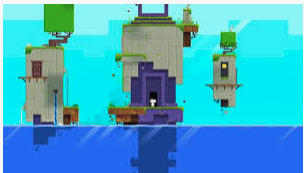
Fez is a 2012, an Inide puzzle platform game. The game Fez is a two-dimensional puzzle platform game, and it's set in a three-dimensional world. Fez was developed by Polytron Corporation, and it was published by Trapdoor. Fez had a player character. gomez receives a fez that reveals his two-dimensional world to be one of four sides of a three-dimensional world. The player can rotate between these four 2D views to be a realign platform and solve puzzles. The objective is to collect cubes and cube fragments to restore order to the universe.
The game was called an "underdog darling of the indie game scene" during its high profile and protracted five year development cycle. The game Fez is a designer and Polytron founder Phil fish gained celebrity status for his outspoken public persona and his prominence in the 2012 documentary Indie game - The movie which detailed Fez's final stages of development and Polytron's related legal issues. The Fez game met critical acclaim upon its April 2012 release for Xbox Live Arcade. The game was ported to other platforms following the expiration of a yearlong exclusivity agreement.
Reviewers commended the game's emphasis on discovery and freedom but criticized its technical issues, in-game navigation, and endgame backtracking. They likened the game's rotation mechanic to the 2D–3D shifts of Echochrome, Nebulus, Super Paper Mario, and Crush. Fez won awards, including the Seumas McNally Grand Prize and Eurogamer's 2012 Game of the Year. It had sold one million copies by the end of 2013, and it influenced games such as Monument Valley, Crossy Road, and Secrets of Rætikon. A planned sequel was cancelled when Fish abruptly left game development.
0 notes
Video
tumblr
~ The Summer of low bitrate and pizzicato ~ If you spotted me walking the streets in the distant summer of 2008, chances were I was listening to either the MP3 soundtracks from Rule of Rose or Echochrome. I played both endlessly on my way to and from work, when taking the occasional walk, or when out shopping for supplies. Two completely distinct games whose music is brought together by seemingly fortuitous parallels, in that both composers, who have a background in classical music composition, opted to write music for a string ensemble to perform.
Minobe & Sakamoto were born a few weeks apart in the fall of 1972. The former started as a self-taught musician capable of composing from an early age, who had a long career at SEGA/WaveForm before joining Delfi Sound. The latter was a child prodigy who went on to found a specialised VGM label, Noisycroak, who also collaborated with SEGA. Both have graduated from Waseda University in the 90s. Equally curious is the fact that the following title in the Echo series, the PSP game Echoshift, was scored by Minobe himself in 2009; while Sakamoto returned for the final entry, Echochrome II, in 2010.
17 notes
·
View notes
Text
GOTG Review: Echochrome
This is the fourth game in my Backlog Roulette series, where each month I spin a wheel to randomly select a game on my massive backlog that I must play (though not necessarily to completion). These wheel spins occur on the monthly preview episodes I co-host with my friends on The Casual Hour podcast.
You want to hear something super lame? Echochrome is all about your perspective.
OK, maybe I should explain why that’s lame. Echochrome is literally a game about perspective. You rotate a camera to hide, reveal or alter the level’s geometry to coax a character you don’t directly control to navigate to specific areas of the map. It’s Lemmings in the style of an M.C. Escher.
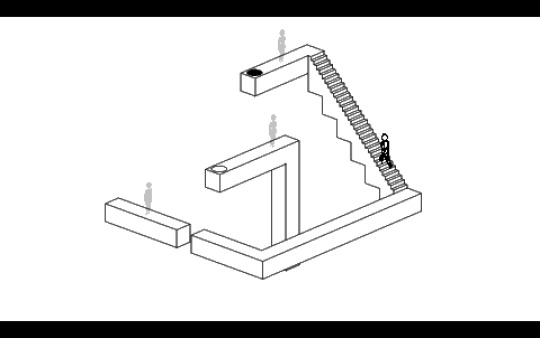
So when I say it’s a game about your perspective, that’s some on-the-nose, too-clever-for-your-own-good writer bullshit. Except that that’s not what I’m talking about.
The perspectives I’m talking about are not within the game’s clockwork levels, but outside of them. In the menus. In the presentation. In your approach to the game as a player as you hold your PSP and look upon it.
Echochrome does not function like a traditional game. You don’t go from Level 1 to Level 2. I mean, I guess you technically can, but good luck figuring out how. Because when you load up Echcohrome for the first time — after getting through its initial tutorial — you’re thrown into its main menu, greeted not by more expected options like “campaign” or “time trial” or “challenge.” Instead you’ll see the words “freeform,” “atelier,” “canvas” and my favorite “etc.”

Love it. No notes. Well, maybe just one note: What the hell do any of these things mean?
“Freeform” is the top option. Let’s try that. It dumps you into a puzzle. You solve it. You’re dumped into another puzzle. You solve it. Maybe this is a traditional game after all. But then you notice a letter and a number shown at the beginning of each puzzle. B4, F6, D1, C3. But you don’t think much about it. That is, until you reach a puzzle you can’t solve. One in which you realize the game has a 10-minute time limit per puzzle.
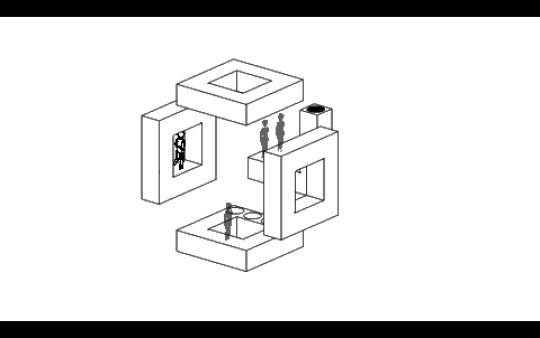
This is B8. I'm too stubborn to look up the answer, but I just can't figure out how to get the last echo. I hate it.
Cool, cool. While I think on that puzzle, let’s go back to the main menu and check out “atelier.” There’s no Ryza or Sophie to be found though, only a 8x7 grid of level options. And now the codes you saw on freeform make sense. Those were level identifiers. Row B, stage 4. Which means freeform is essentially a randomizer, whereas atelier presents them in the game’s natural order, of which you’re free to tackle any of the 56 stages however you wish. You go back to the one that stumped you before — B8. But after five minutes elapse, the failure bell rings. You only get half the time to complete a level in atelier mode (I guess because you chose the level yourself?)
And then there’s canvas — a neat little level editor to make your own stages — and etc., where the options, saves, credits and a replay of the tutorial go.
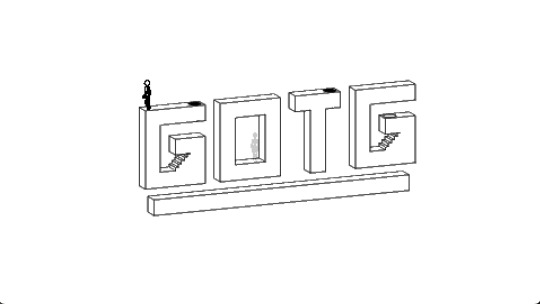
The game itself? Oh, it’s pretty cool, I guess. The perspective mechanics can feel a little inconsistent, requiring very digital outcomes through an analog control scheme. And the time limits feel rather pointless (if the game is already tracking your time on each puzzle like a score, then what’s the need for a limit?) in a game that should be as pleasantly relaxing as doing the daily crossword or sudoku. And it is equal parts frustrating and funny when the soothing disembodied lady voice says “oops” every time you let your Escher lemming fall off the world.
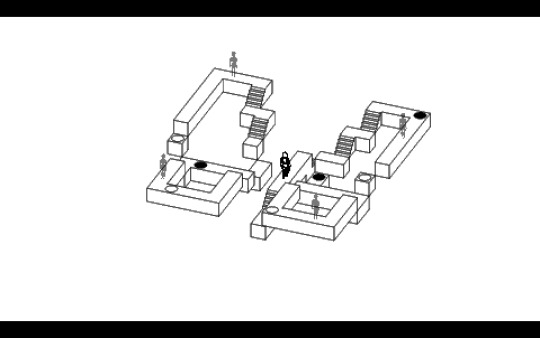
But more important to me is how the game bucks traditional names, rules and conventions to do its own thing (as the late Sony Japan Studio was wont to do with all their games), giving it a novelty and charm that endures to this day. Echochrome II though, requiring both a PS3 and a PlayStation Move controller to play, ages quite a bit worse unfortunately.
2 notes
·
View notes
Text
youtube
Many years ago...a green PSP-3000 with MGS Peace Walker included. Checking the Playstation Network for demos. DBZ Tenkaichi Tag Team and Echochrome. This song. Man...
2 notes
·
View notes
Video
youtube
FULL EPISODE: Cinematech NE - Squad 7 Goals
Or... In Your Dream Orchestra!
#The Pile#G4#Cinematech#Cinematech: Nocturnal Emissions#Tales of the World: Radiant Mythology#Patapon#Wrestle Kingdom (game)#Dream Orchestra#Cooking Mama 2: Dinner with Friends#Eyeshield 21: The Field's Greatest Warriors#Final Fantasy Fables: Chocobo's Dungeon#Pixeljunk Monsters#Echochrome#Welcome to the School Infirmary#Higanshima: Sonogishi Island#Fury (game)#Tamagotchi: Dance Fever!#Valkyria Chronicles#The Space Sheriff Spirits#The Legend of Heroes: Trails in the Sky#MySpace#Bill & Ted's Excellent Adventure#Crisis Core: Final Fantasy VII
3 notes
·
View notes
Photo

Personal Collection: Echochrome (PSP) - Link
#personal collection#psp#playstation portable#sony playstation#playstation#handheld#game console#echochrome#import gaming#umd#video games#video game#videogame#games#game#graphic design#package design#retrogaming#gamecollector#fujifilm
4 notes
·
View notes
Text
The Last Guy
Japan Studio's first "big" PS3 tentpole sort of feels like the fever-dream of a game designer that's discovered the mapping potential of real-world satellite imagery. Like all fever dreams, it's also unbalanced as all fuck, with the first stage being nearly impossible to complete unless you memorize all survivor and power-up placements.
Save 99% of a locale's survivors? You've still failed the level. Try again.
That feels... needlessly harsh, especially considering how the thermography feature sometimes bugs out and doesn't show clumps of survivors waiting in alleys or in open courtyards.
As it stands, though, it's also typical of 2009 as a specific year in Game Design theory, as the early years of the PS3 and PS Vita gave us a ton of experimental entries like The Last Guy, LocoRoco, Patapon or Echochrome.
0 notes
